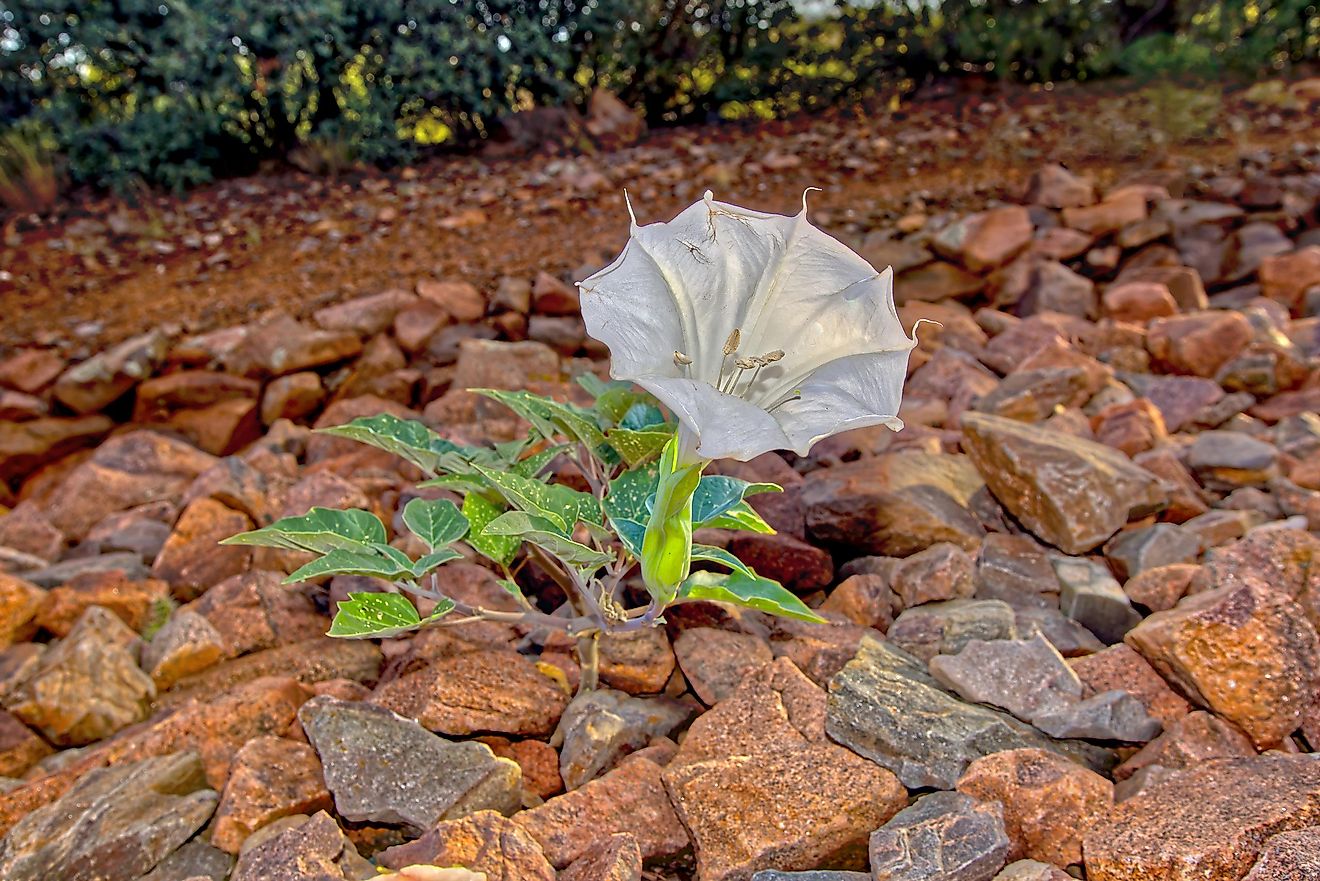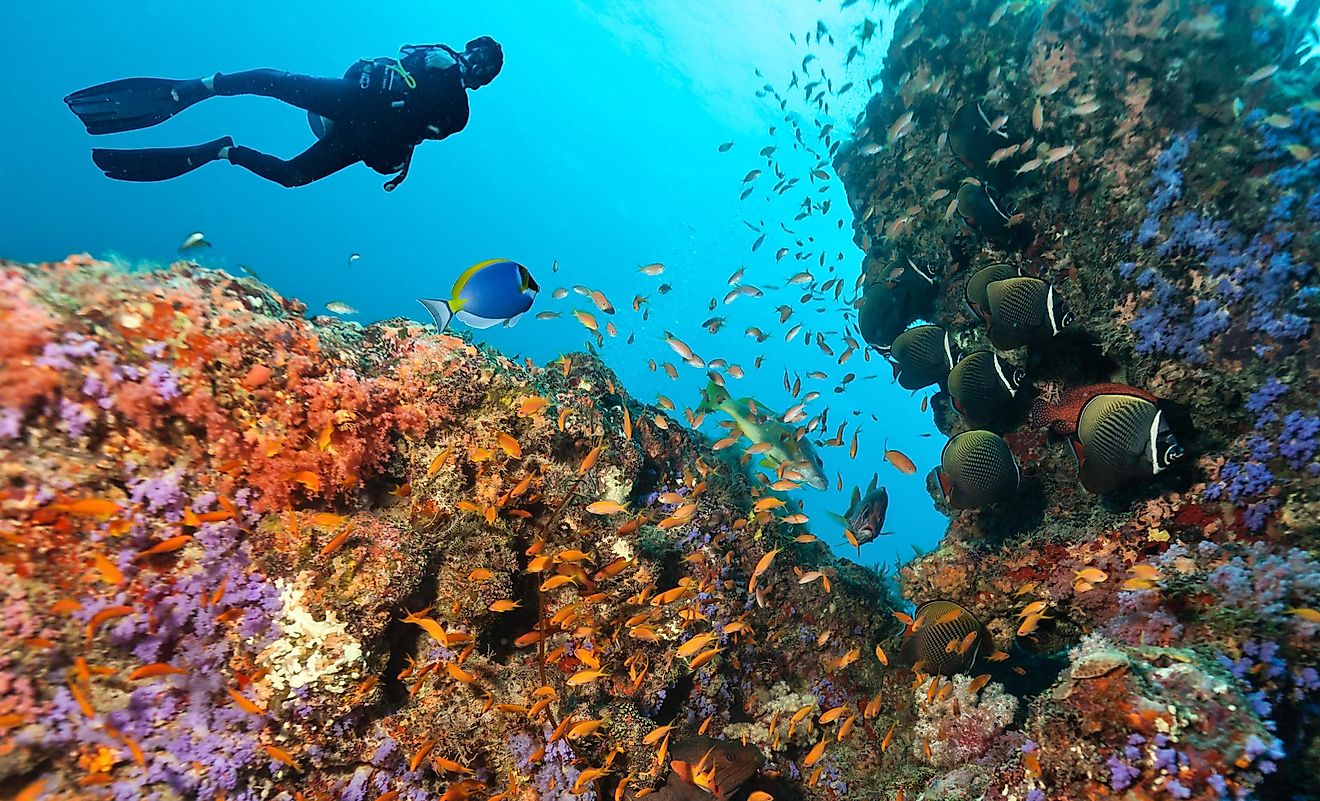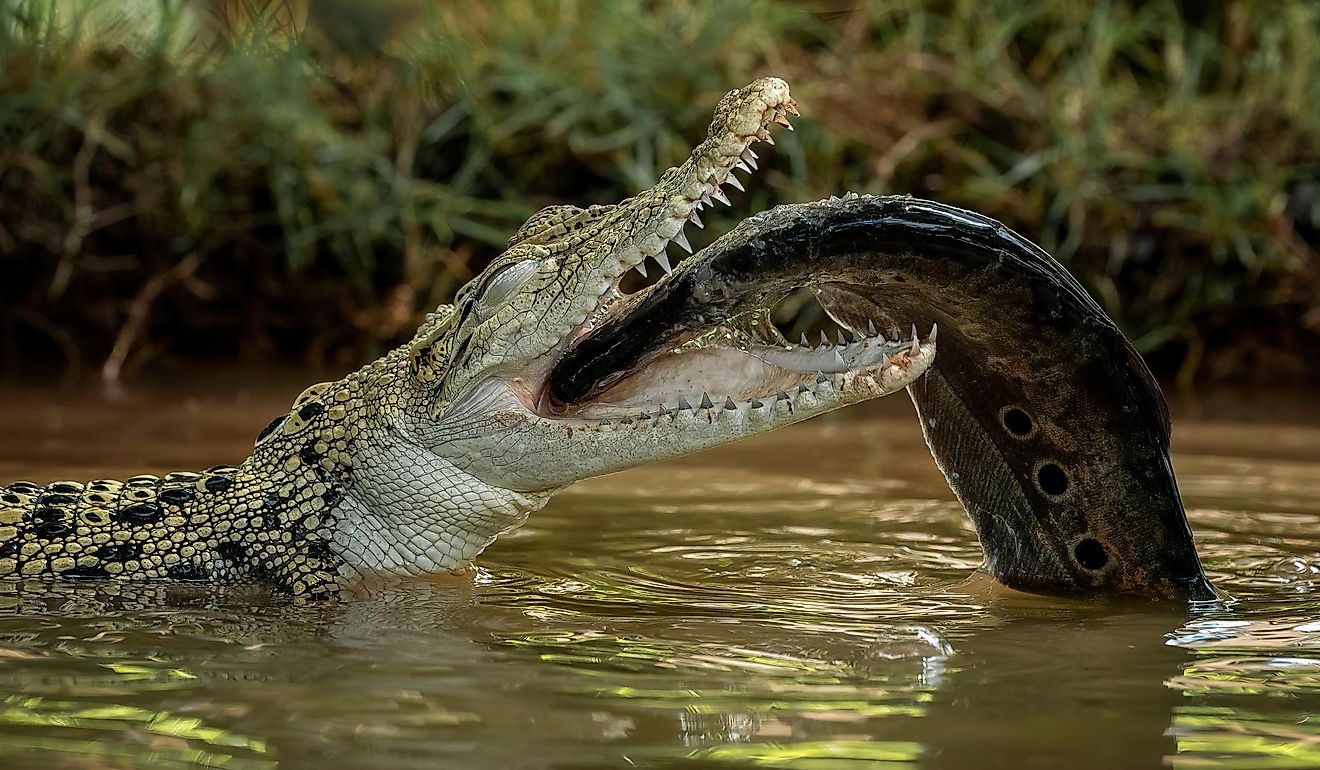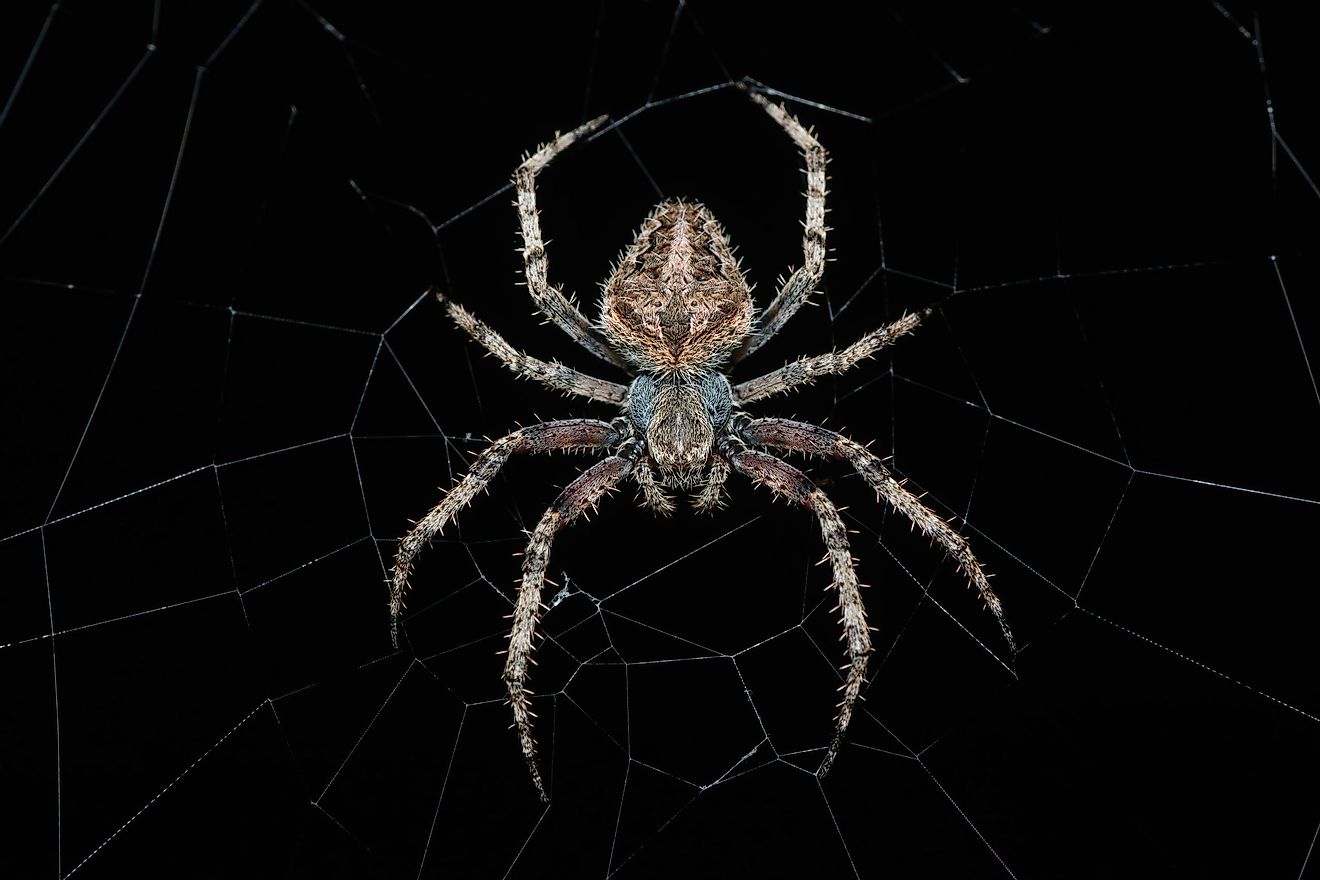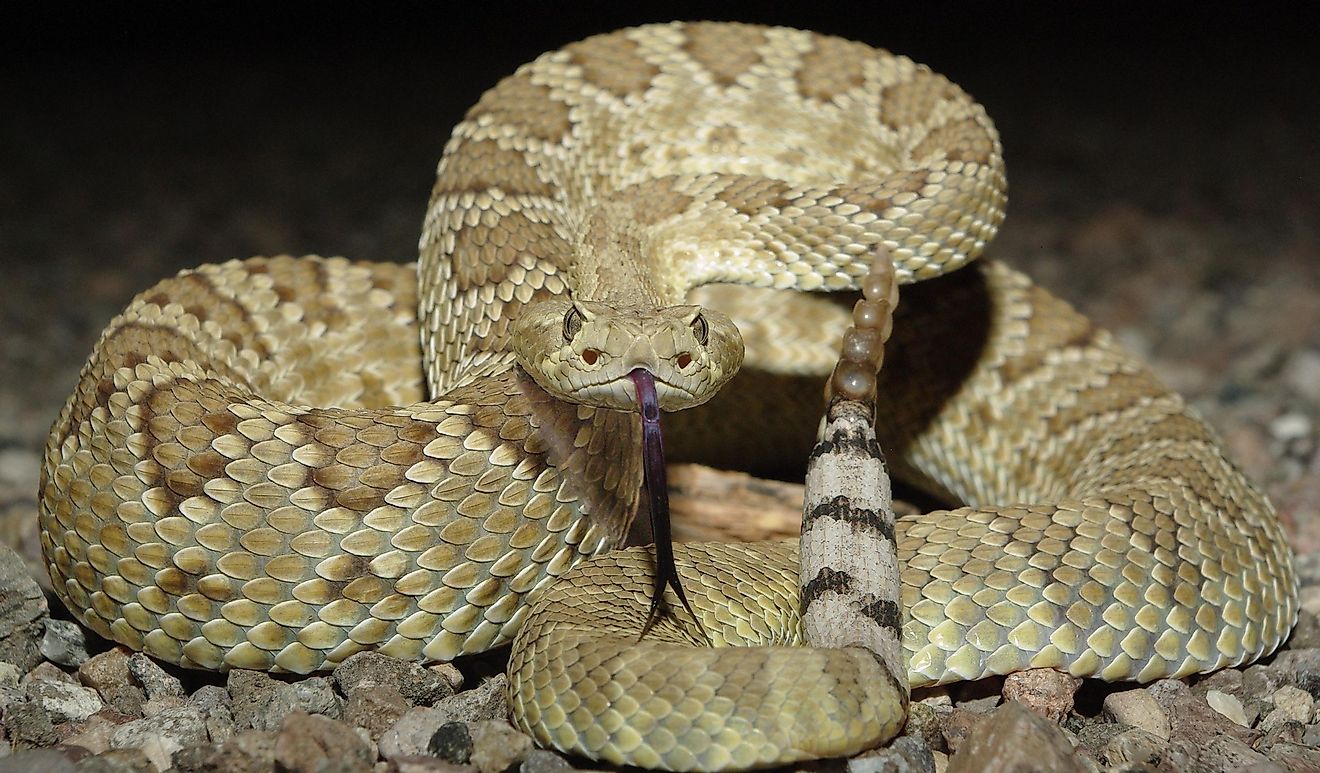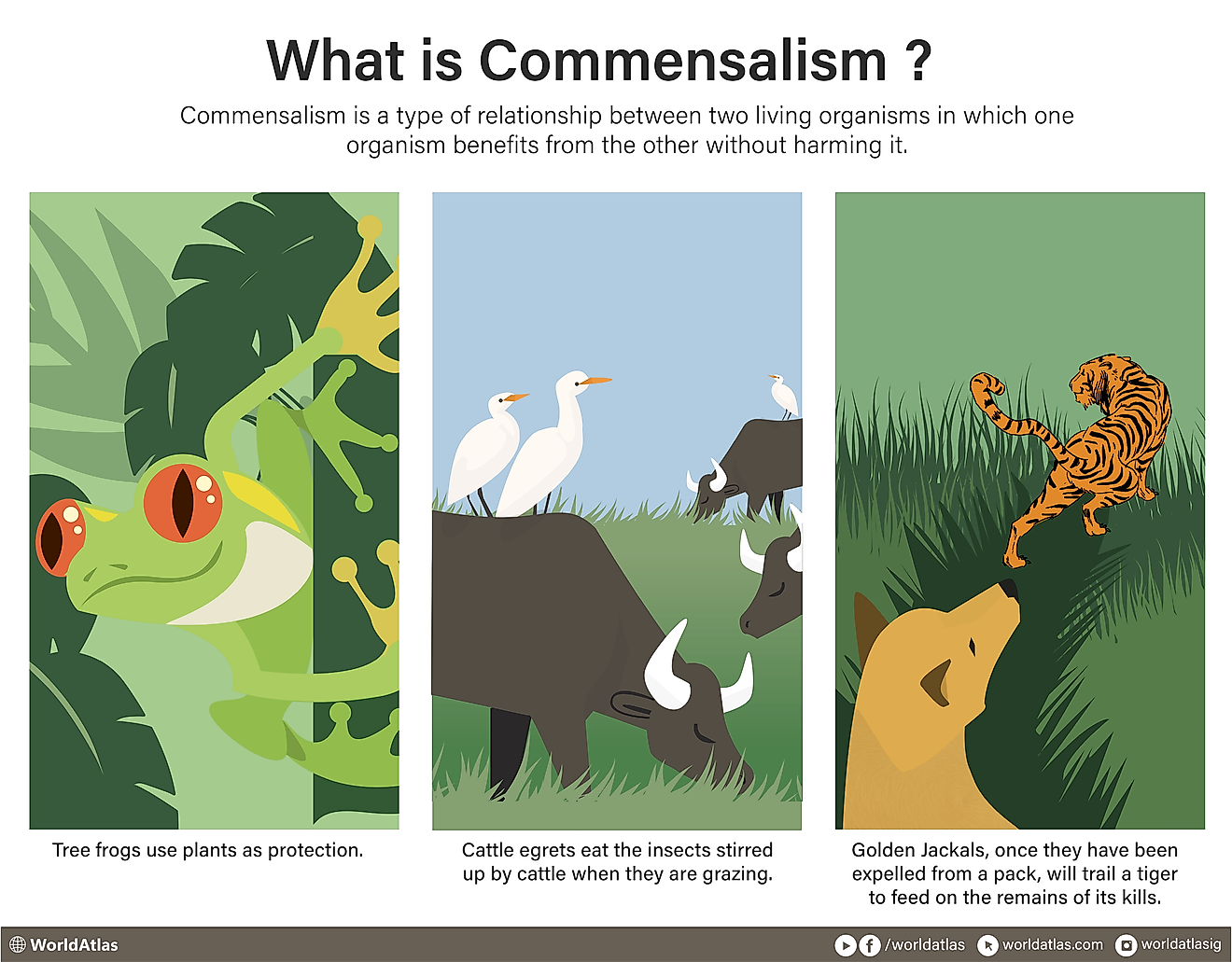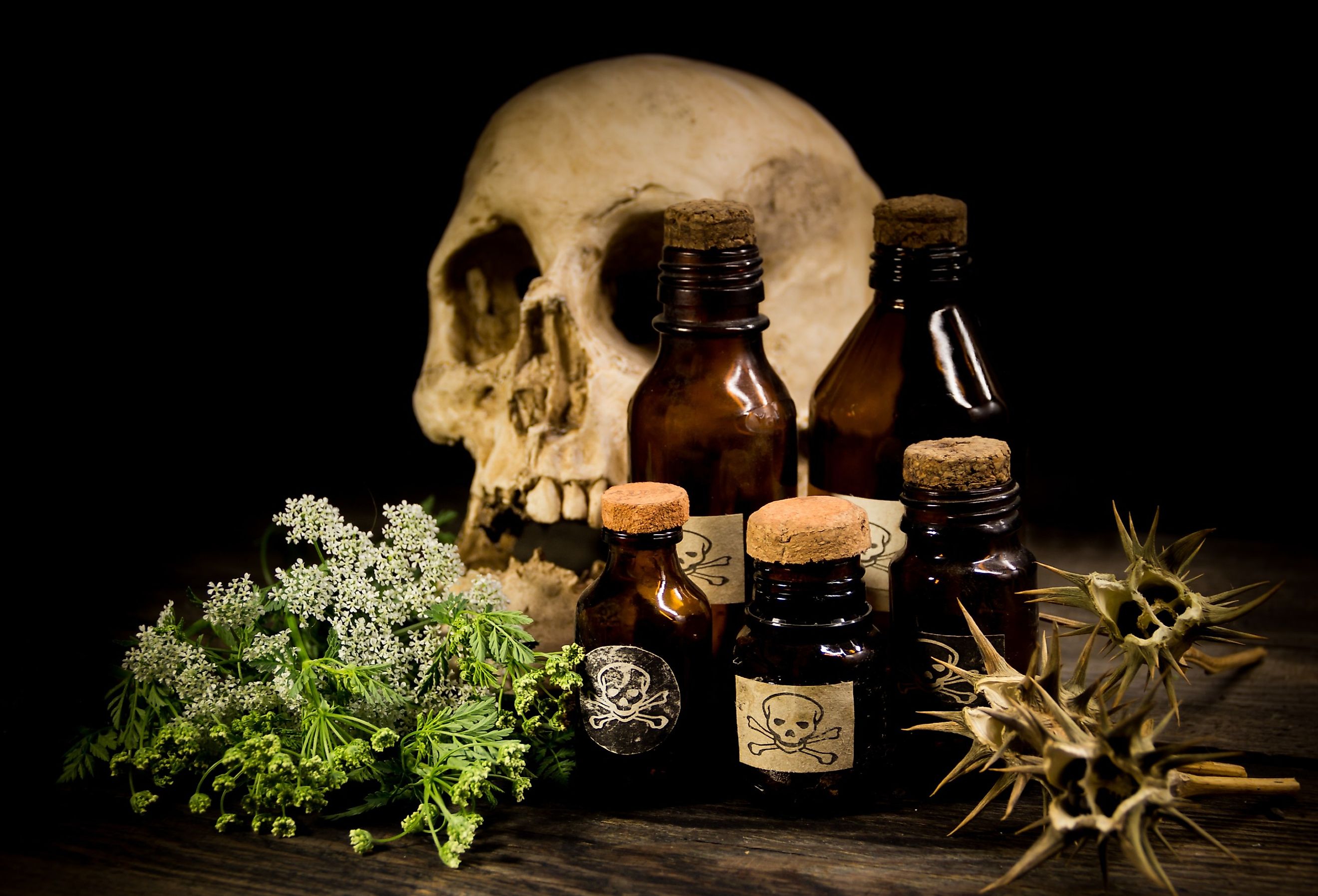
7 Most Dangerous Plants in Texas
If you are visiting Texas this year, it is a good idea to get familiar with the Lone Star state’s plant life before your trip. While most Texan plants are harmless, some common native and naturalized species are bad news for humans and pets. It’s always a good rule of thumb to treat unfamiliar plants with caution. So think twice before picking wildflowers, and no matter how hungry you get on the trail, don’t be tempted to snack on anything you find in the wild. Learn more about seven of the most dangerous plants in Texas.
Water Hemlock
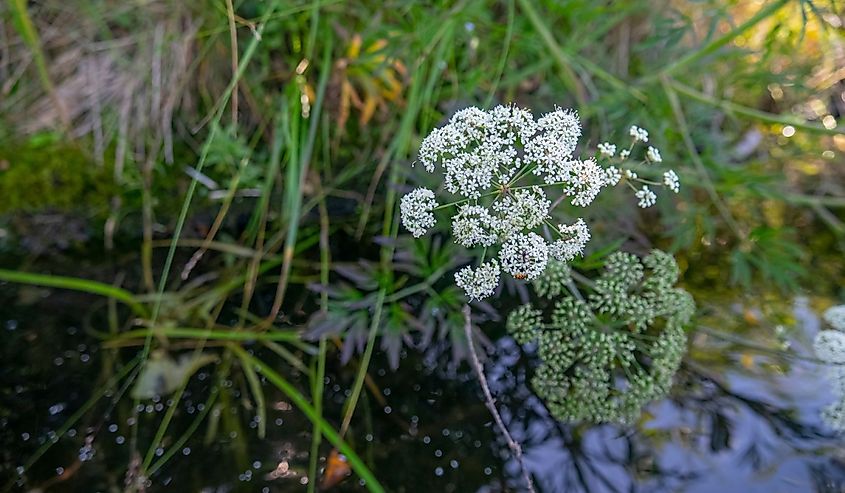
Used throughout the ages as a potent poison, the Hemlock plant has a dangerous reputation. The plant was reportedly used to murder Socrates in 399 BCE. To avoid the philosopher’s fate, learn to recognize and avoid Hemlock — especially Water Hemlock, which grows in the wet areas of meadows, pastures, and streams throughout Texas.
The best way to identify the plant is from its location (in a marshy or damp area) and the small white flowers that appear at the top of long stalks. Water hemlock contains the toxin cicutoxin, which affects the nervous system. Even small amounts of cicutoxin can cause seizures and death if ingested.
Death Camas
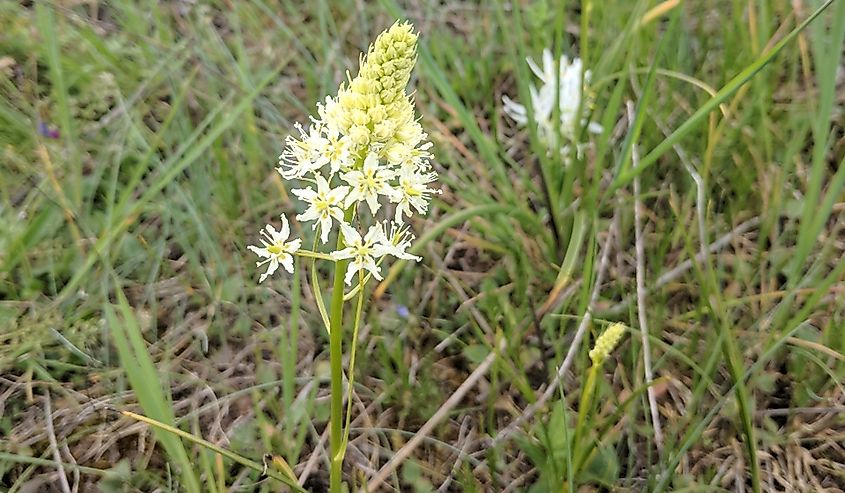
With a name like Death Camas, you know this isn’t nature’s safest plant. Also known as Poison Onion, the Death Camas plant is found throughout the western US and begins growing in early spring before flowering in late April and May. Grazing livestock will sometimes eat the green shoots, desperate for a fresh meal after winter, but the plant is highly toxic thanks to its steroidal alkaloids, toxins that can cause heart failure.
What makes this plant particularly dangerous is its resemblance to wild onions. Unwary foragers could find themselves seriously ill if they confuse the two. While all parts of the plant are toxic, the bulbs are particularly lethal.
Green Lantana Berries
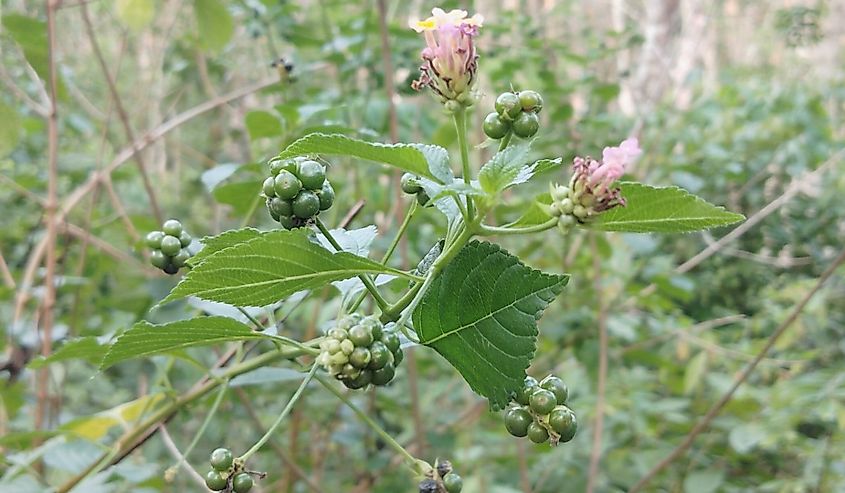
The green berries of the Lantana Camara plant, also known as Red Sage, are highly toxic to humans and animals. These innocent-looking fruits contain triterpenoid, a toxin that attacks the liver, heart, lungs, and kidneys and, in very severe cases, can be fatal. Lantana grows like a weed in Texas, thanks to birds who love to snack on the ripe purple berries and scatter the seeds.
Don’t be surprised if you see Lantana Berries for sale or on the menu in Texas. The berries are safe to eat when ripe and taste like tart blackberries. You will also see several different varieties of Lantana around Texas towns, as the plant is a favorite of gardeners thanks to its beautiful blooms.
Mistletoe
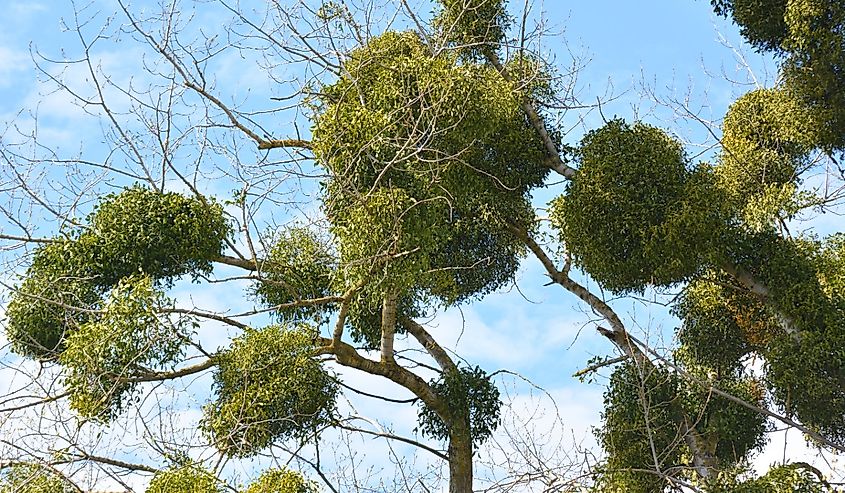
Mistletoe is a much-loved part of the Christmas tradition, but did you know this festive berry is highly poisonous? Mistletoe grows on trees and is commonly found in East Texas. Eating the berries can cause nausea, vomiting, and stomach cramps. In severe cases, the toxic berries can cause heart attacks, seizures, and even death.
Trees don’t like it either, the plant is considered a pest in Texas as it damages forest health by acting like a parasite and leaching nutrients from hardwood and broadleaf trees. Mistletoe may be fine for your holiday decorations, but it’s not always welcome in Texan backyards.
Jimson Weed
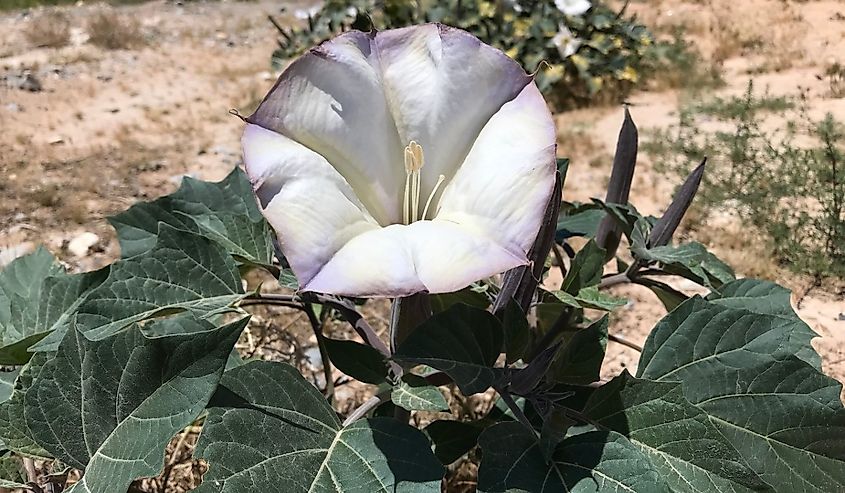
Jimson Weed may look pretty, but this flowering weed is a powerful narcotic that can kill. Also known as Thorn Apple or Datura, the plant is in the Nightshade family and was used by Native cultures as a strong hallucinogen. Highly toxic, eating any part of the plant is very dangerous, causing fever, seizures, delirium, convulsions, heart failure, and respiratory arrest.
It is easy to identify Jimson Weed. You will know it from its large, trumpet-shaped, white flowers that bloom in the evenings between spring and fall. The plant is native to the Edwards Plateau region of Central, South, and West Texas.
Poison Sumac
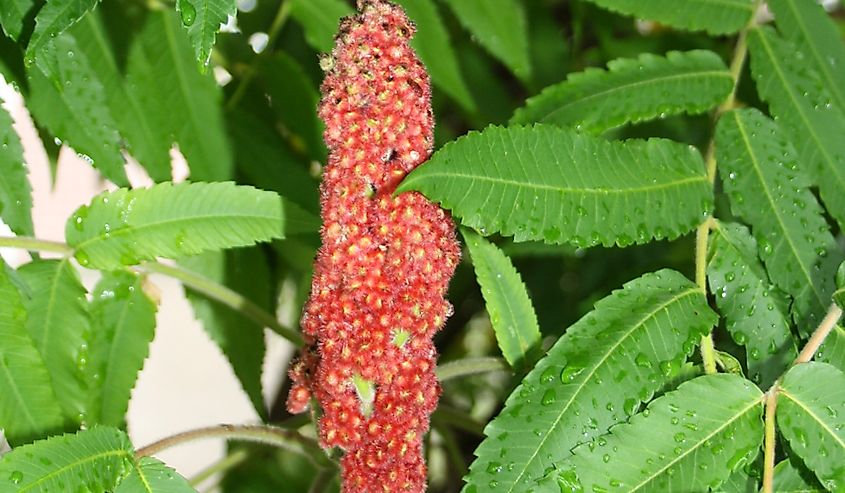
Poison Sumac has a lot in common with Poison Ivy. Both can cause itchy, red rashes, swelling, and blisters. The big difference lies in their appearance. While most people are familiar with Poison Ivy thanks to the "leaves of three, let it be" warning, not everyone can readily identify Poison Sumac. The plant's leaves consist of seven to 11 leaflets in pairs, with a single leaf at the end of the stem. They can also grow as a small tree or a tall shrub.
While Poison Ivy grows almost anywhere, Poison Sumac is more selective, preferring the wet woodlands of Eastern Texas. If you do come into contact with the plant, wash your skin thoroughly and be careful handling your clothes, as the toxic sap can stick around and infect whoever touches them. Never burn Poison Sumac leaves — the smoke is a potent irritant that can damage your lungs.
Oleander
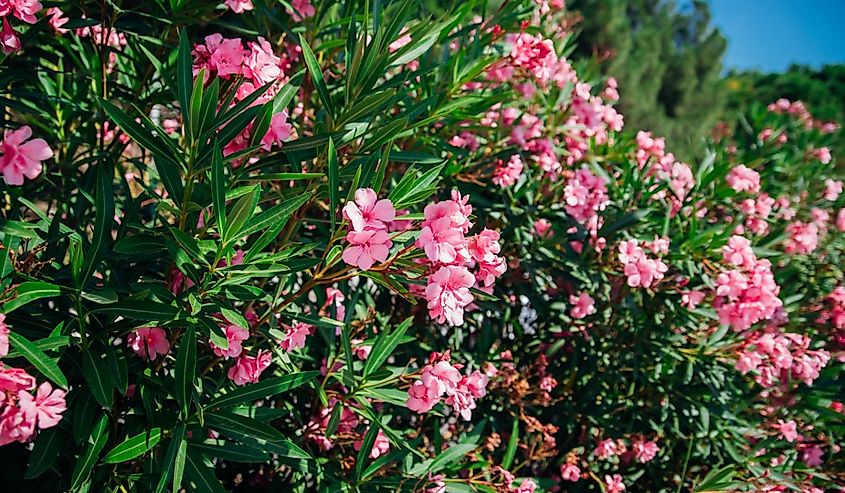
The Oleander plant loves the sun, so it is no surprise that it thrives in Texas. Naturalized in the state, it is a popular ornamental thanks to its pink, showy, blossoms. Pretty but poisonous, Oleander contains a highly dangerous compound that can cause cardiac arrest. Even a small amount can prove fatal, and the plant is dangerous even after it’s dead, with wilted leaves and dead clippings remaining highly toxic.
For this reason, the Texas Department of Rangeland, Wildlife, and Fisheries Management recommends homeowners remove Oleander from their gardens, keep pets safely out of reach of any plants, and never use the leaves to make compost.
Look, Don’t Touch (or Eat!)
Don’t mess with Texas, especially not some of its frightening flora. The region is home to several varieties of poisonous plants that can give you a nasty sting…or worse. Don’t let that stop you from enjoying this beautiful state, however. From spectacular lakes to forested canyons, Texas has lots to offer outdoor enthusiasts and plenty of amazing flora and fauna you can enjoy without worry. Dangerous plants aside, you’ll get a warm welcome in this incredible state that’s known for its charm and hospitality.
